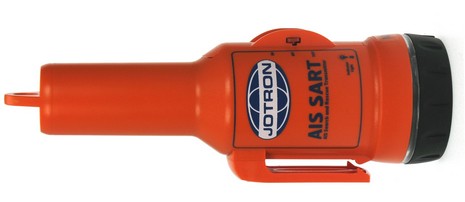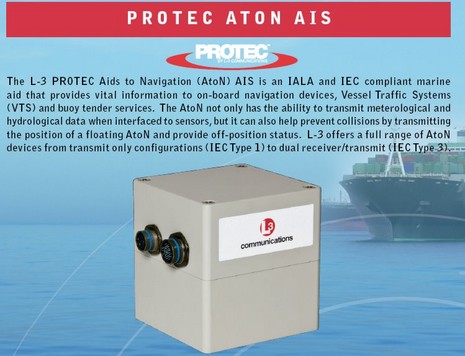Jotron AIS SART, & the L-3 Protec

I once heard a gentleman who probably knew what he was talking about complain fairly bitterly about the electronic radar reflectors called SARTs. He said they'd been pushed on the GMDSS by a member nation where they were made and that they'd never proven themselves effective in search and rescue operations. Which is just one reason why the new Jotron AIS SART is an interesting development...
I found the most detail about this first AIS SART at a GMDSS forum. There you can learn that it's cleverly programmed to repeat its 1 watt signal 8 times in a 14 second period, and thus hopefully from a wave top at some point, before resting long enough to preserve its battery power for at least 96 hours. In tests it's been seen from a vessel at up to 10 nautical miles, from a helicopter up to 40, and from an plane up to 132. And it's only 10 inches tall (though it does cost $1,200). The SART signal should be seen on any AIS plotter where its unusual factory-programmed MMSI is supposed to trigger a special icon. I imagine that the icon will take a while to proliferate via software updates but if bridge teams learn that an MMSI beginning with 970 is a SART, that should help make them effective.Meanwhile I noticed on the FCC site that the L3 Protec AtoN AIS is now approved and apparently ready to deploy on aids to navigation around the U.S. (pdf brochure here). It can do all sorts of things besides transmitting its position and even weather sensor data to passing vessels. For instance, it can send AtoN health and local AIS info to the authorities ashore. And it can amplify and repeat AIS SART signals! It's pretty stunning how the uses of AIS are multiplying, and how much confidence international bodies like the IMO seem to have in the technology (and our ability to handle lots of it). And, while those bodies may have missed the mark with the original SART, they have some major successes with EPIRBs, PLBs, AIS, and maybe DSC. The gCaptain likes to think about where this is all headed too.


 Share
Share
This was the same AIS device (although in an EPIRB housing) that was detected by Orbcomm satellite during tests In Hawaii last January:
http://www.maritimesafetynews.com/?p=176
More good news: IEC has just published the certification standard for this AIS-SART (IEC 61097-14).